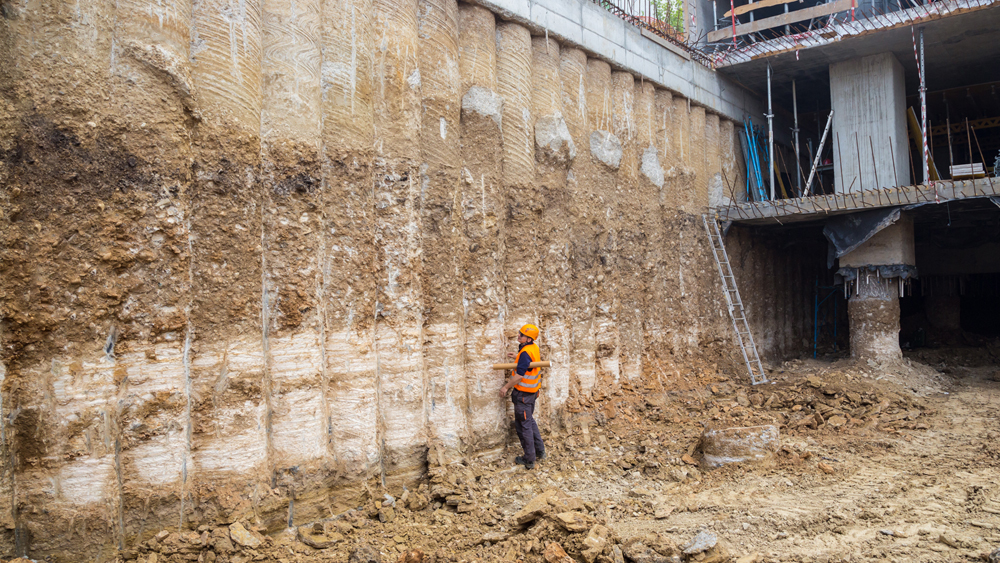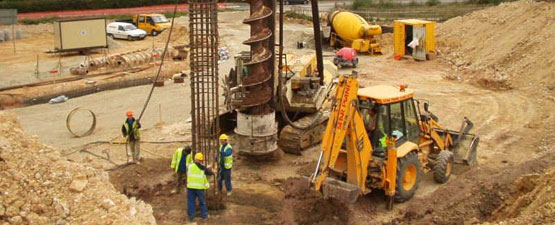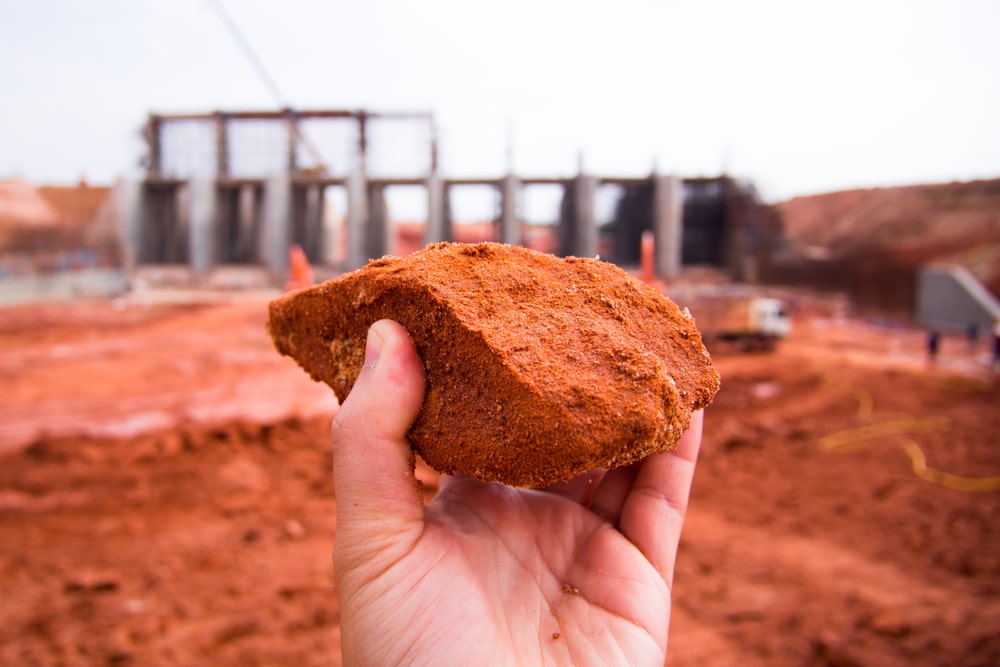Leading Strategies for Geotechnical Engineers to Boost Soil Security in Construction Jobs
Leading Strategies for Geotechnical Engineers to Boost Soil Security in Construction Jobs
Blog Article
The Interdisciplinary Approaches in the Geotechnical Market: Linking the Gap Between Design, Geology, and Environmental Science for Ideal Project Outcomes
The integration of engineering, geology, and environmental scientific research within the geotechnical industry is not simply helpful; it is necessary for attaining optimum task results. What techniques might arise to facilitate this essential collaboration and enhance the efficiency of geotechnical methods?
Relevance of Interdisciplinary Partnership
The significance of interdisciplinary partnership in the geotechnical market can not be overemphasized. Reliable geotechnical projects call for the integration of varied proficiency from various areas, consisting of design, geology, and ecological scientific research. This partnership makes certain that all elements of a task are considered, bring about detailed remedies that deal with complicated obstacles.
When working in seclusion,Interdisciplinary collaboration fosters advancement by enabling specialists to share understandings and methods that might not be obvious. By leveraging the toughness of several self-controls, groups can determine potential threats, optimize style processes, and improve the sustainability of geotechnical tasks. Such cooperation advertises an alternative understanding of site-specific problems, which is essential for exact analysis and decision-making.
The intricacy of geotechnical tasks necessitates a collaborated approach to analytical. When engineers, rock hounds, and environmental scientists function with each other, they can develop a natural approach that lines up technical requirements with ecological considerations and regulative compliance. This harmony not only enhances task end results yet additionally contributes to the long-lasting resilience of facilities. Ultimately, interdisciplinary cooperation is essential for progressing finest practices and achieving quality in the geotechnical market.
Key Duties of Each Technique
Collaboration amongst various disciplines is not simply beneficial; it is crucial for the successful implementation of geotechnical projects. Each technique-- engineering, geology, and environmental scientific research-- plays a distinctive yet interconnected duty that adds to project effectiveness and sustainability.
Geotechnical designers are mostly responsible for developing foundations and making certain structural stability. They evaluate dirt and rock properties to evaluate load-bearing abilities, providing vital data for secure building and construction techniques. Their competence allows the solution of ingenious services to complicated difficulties.

Environmental researchers examine the prospective impacts of building and construction on environments and water resources. They perform ecological analyses and establish mitigation techniques to decrease adverse effects. By integrating environmental considerations, they guarantee conformity with policies and advertise sustainability throughout the task lifecycle.
Case Research Studies of Successful Assimilation
Successful integration of geotechnical self-controls can be exhibited with numerous instance researches that highlight the efficiency of team effort in resolving complex engineering difficulties. One remarkable example is the building and construction of the Hong Kong-- Zhuhai-- Macau Bridge, where a collective technique including geotechnical engineering, geology, and ecological scientific research was important. Geologists and designers worked in unison to examine the seabed problems and maximize the foundation design, ensuring security and reducing environmental effect.
One engineer of record more impactful situation is the renovation of incline stability in the San Francisco Bay Area, where an interdisciplinary team incorporated geotechnical evaluation with environmental analyses. By integrating hydrological research studies and geological studies, the team efficiently recognized prospective landslide dangers and executed reliable mitigation measures, improving safety and sustainability.
Furthermore, the redevelopment of Brownfield sites often needs a multidisciplinary technique. In one instance in Chicago, collaboration amongst geotechnical designers, environmental researchers, and city organizers caused the effective remediation of contaminated dirt, enabling the safe change of the site right into a neighborhood park. These situation research studies illustrate that interdisciplinary collaboration not only addresses technological obstacles however likewise fosters ingenious services that profit both projects and communities.
Obstacles in Multidisciplinary Projects

Furthermore, collaborating routines and operations among various teams can be troublesome, particularly when each discipline has distinct job milestones and deliverables. This misalignment can lead to delays and increased costs. The difficulty of source appropriation likewise looms big; making certain that specialized competence is readily available at crucial points requires careful preparation and insight.
Last but not least, regulatory compliance postures one more significant difficulty. Each self-control might encounter different governing frameworks, and lining up these requirements to satisfy task objectives can be lengthy and complex. Dealing with these difficulties necessitates strong leadership and reliable communication techniques to cultivate cooperation and guarantee that multidisciplinary groups work cohesively towards shared objectives.
Future Trends in Geotechnical Practices
As the geotechnical industry advances, arising trends are reshaping techniques to attend to the obstacles dealt with in multidisciplinary projects - geo tech engineer. One considerable trend is the enhanced combination of sophisticated technologies, such as synthetic intelligence and artificial intelligence, right into geotechnical analysis and design. These modern technologies improve predictive modeling and threat assessment, enabling engineers to make more educated choices throughout the task lifecycle

Additionally, the adoption of electronic doubles and real-time surveillance systems is becoming more prevalent. These devices help with recurring assessment of soil conditions and structural efficiency, permitting timely treatments when concerns occur.
Final Thought
In conclusion, the combination of engineering, geology, and environmental science is vital for attaining optimal results in the geotechnical market. Successful case researches illustrate the benefits of this approach, while acknowledging the challenges dealt with in multidisciplinary tasks.
The integration of design, geology, and environmental scientific research within the geotechnical sector is not just helpful; it is crucial for accomplishing optimum job results. Effective geotechnical projects call for the combination of varied experience from different areas, consisting of engineering, geology, and environmental scientific research.Browsing the intricacies of multidisciplinary tasks in the geotechnical industry provides numerous considerable challenges.As the geotechnical industry develops, emerging patterns are reshaping practices to resolve the obstacles faced in multidisciplinary tasks. Geotechnical designers are progressively working together with environmental researchers to make certain that projects align with sustainability objectives and comply with regulative needs.
Report this page